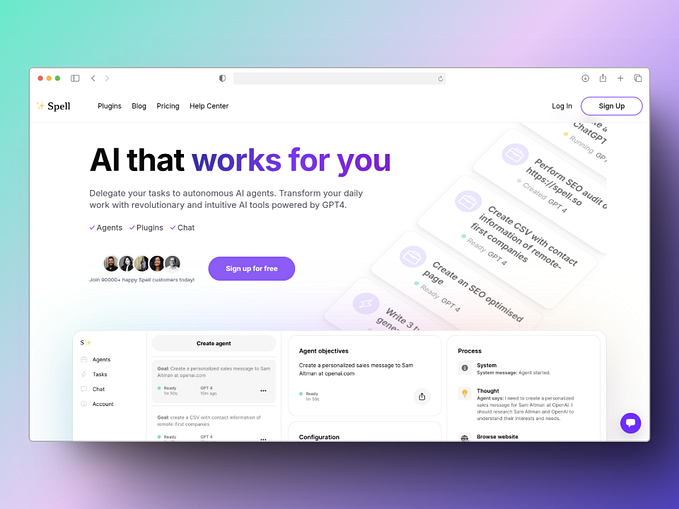Powering the Rise of SMBs

I’m extremely excited about the opportunity surrounding software catering to SMBs. Public names like Shopify and Zendesk have proven it’s possible to create $10B+ companies with this GTM approach and secular trends surrounding the digitization of workflows, the rise of new distribution models, and the growing resources in the SMB community only make it more likely we will see an increasing number of category-defining companies in the space.

In the past 15 years, we have seen waves of multi-billion dollar companies that offer cloud-based solutions, starting with the likes of Salesforce back in 2003. However, what we are witnessing recently is a wave of SaaS companies focused on the SMB category, organizations with 1–1,000 FTEs representing over 99% of the businesses in the US, that have seen explosive growth and adoption rates above the broader software market. Companies like Square, Wix, Stripe, and Shopify are offering SMB-specific solutions, either in the form of platform products, point solutions, or APIs, with the goal of providing owners the tools to build and scale their respective businesses better than ever before. SMB-focused software is not new by any means, but over the last 9 months, the COVID pandemic has been a forcing function that has accelerated the digitization of these businesses, creating tremendous growth opportunities for this category of software. The market has noticed and as a result, we have seen traditionally SMB-focused public stocks rise at a rate significantly faster than major indices shown below.

Before discussing why SMB-focused solutions are so relevant and effective right now, I thought it would be helpful to outline the different types of SMBs in my mind:
1) Traditional Small Local Businesses 💒
2) Microbusinesses / Solopreneurs 👩💻
3) High-growth Startups 🚀
4) Business Unit Teams / End Users 👨👦👦
Each category is different, but the few commonalities they share, in my opinion, are why I’m so excited about the space and the solutions that serve them. In all of these companies, it’s more likely than not that the buyer of the product is also the user. This results in a customer process that’s much more simplified, with less friction and complexity than those at enterprise companies, where procurement is done through the IT department or CIO-level. As a result, the process is streamlined — companies can get immediate product feedback and iterate to best understand who’s using the product and why. Additionally, the sales cycle is significantly shorter, savings the sales reps time and the company money.
Why Now?
While the pandemic shone a light on the potential of SMB software, the performance / penetration of the segment was a long time coming, influenced by a multitude of factors outside of COVID-19. These drivers can be broken down into two separate components — the evolution of the demand for SMB SaaS and the innovation enabling the software providers themselves.
Evolution of Demand
Growth of SMBs
In the past few years, we’ve seen a rise in the number of new business applications filed with the IRS, showing favorable trends within the entrepreneurial community. Part of this can be attributed to near-zero interest rates, an increase in personal income thanks to the CARES Act, and the increasing digitization of services and platforms that decrease the barriers to start a business. The other part can be attributed to the emergence of new types of businesses / paths to generating steady income — traditional SMBs, which makes up 30.7 million US businesses as of 2019, the freelance community, a segment benefitting from the ever-growing gig-economy and representing over 57 million people, or solopreneurs, an emerging category that’s becoming more popular/possible given the abundance of resources for one-person businesses and a growing attitude that it's easier to go at it alone. Regardless of the type of entrepreneur / business, these represent favorable signs that will hopefully lead to the next decade of disruptors — startups that follow the likes of Airbnb, WhatsApp, Uber, Slack, Square, and others founded during and capitalized from the ’08 recession.
SaaS Adoption

We are seeing recently is a surge in software adoption by small and medium-sized businesses across a variety of industries, where organizations are realizing the benefits of digitizing operations using cloud-based software for company formation, billing, HR and more. The pandemic has catalyzed these businesses to realize digitization is an existential priority, not just a potential competitive advantage. For example, according to a Blissfully report, the average small business uses 100 SaaS products across its organization, a number that has increased more than 10x since 2015. Additionally, adoption is increasing throughout different departments and business functions — in 2010, almost 90% of SaaS usage was from engineering teams; today, that number is less than 20%, with marketing, sales, product, and others making up the remaining 80%+. SMBs are realizing the importance of leveraging these tools to build a sustainable competitive business, regardless of the circumstances.
Innovation Enabling SaaS Providers
Over the past few years, there has been a shift to a new generation of SaaS products — ones with new models of distribution, economics, and consumption. These new models ease SMB adoption, and have enabled SaaS companies to begin thinking of SMB’s as a core part of their go-to-market strategy as well as a massive and untapped market. As barriers to sell have decreased significantly due to lower upfront costs and stronger distribution channels, we have seen a wave of software companies either start out in or solely focus on the SMB segment — a historical red flag to investors if not for a few key trends:
Sustainable Unit Economics 📈
One of the biggest deterrents from software companies selling to SMBs was the inability to generate viable unit economics given the high cost and time spent acquiring that type of customer. It was difficult to justify having expensive sales reps exclusively target smaller customers where there was little upside and similar conversion rates. This changed as a result of two key shifts in the way companies market and distribute solutions. The first is that scalable acquisition models emerged as social media platforms like Facebook, Twitter, and LinkedIn created efficient and cheap ways to acquire customers as well as provided users the ability to promote the product, subsequently increasing the virality. For a target customer base that is inherently fragmented, being able to reach potential customers in a flexible, simple, and cost-effective manner was a game-changer. The second shift is the growing popularity of a freemium model. While freemium is primarily a customer acquisition strategy rather than a sustainable pricing structure, it significantly increases product reach by decreasing friction and barriers to adoption. If the product provides meaningful ROI and has a natural path to upsell, the unit economics will work out favorably.

A great example of this is Otter.ai. The voice intelligence collaboration platform allows users to easily download the product for free but provides them with only 600 minutes of total transcription time and 40 minutes per session — similar to Zoom’s free offering. To unlock additional minutes or collaborate with other users, you must upgrade to the paid or business plan, which is almost necessary once multiple members of the same team or ecosystem begin using the product. Additionally, by transcribing a meeting and subsequently sending around notes to the respective participants, you are inherently increasing virality and decreasing customer acquisition costs through organic growth.
Adoption in the form of APIs 🖥
The rise of the API economy is one of the more exciting recent trends in technology as it’s changing how companies build, distribute, and use software. If you’re not familiar with APIs, here’s a detailed explanation by Packy McCormick that lays it out well. Essentially, API-first products allow their users to focus on the primary components of their businesses and insert best-in-class solutions everywhere else in the form of an API. For SMBs and startups that are resource-scarce / cash-constrained, this is a game-changer as it significantly expands their capabilities by just implementing a few lines of code, allowing them to scale and operationalize with little effort and minimal cost. It also gives them the ability to easily collect performance data in real-time, leading to more proactive and effective decision-making. Large tech companies like Google Cloud and AWS help entrepreneurs get off the ground and API-first businesses allow them to accelerate.

Take Extend for example. Using an API-first approach, they give merchants the ability to offer extended warranties and protection plans, significantly reducing integration complexity and driving incremental revenue. Additionally, the company handles all customer support in the process. This allows merchants to focus on selling their core product, while still broadening their capabilities and creating a more enjoyable consumer experience.
Product-led Distribution 💸
As I mentioned in my prior post, there has been a shift in the way companies buy software, moving from the CIO to the end user.
“The adoption model has shifted from what I would call a “macro adoption” where the whole enterprise is buying into this adoption to a “micro adoption” model where an individual or a small group inside of an organization can make a decision to try a SaaS application and adopt it.”
Eric Vishria on Invest Like the Best
Because of this, many software products have changed their method of distribution to best suit an end user’s preferences — focusing where the user lives and prioritizing ease of use, immediate ROI, and frictionless onboarding. While we see this most commonly in large enterprises, what’s fascinating is that the SMB community directly benefits from this as well. Democratizing access to high-value, easy to use software plays right into SMB preferences and eliminates many of the barriers they had from adopting these solutions.

Shopify is an obvious example of this, but another interesting one is Calendly, which just raised at a $3B valuation. Calendly simplifies its distribution by being easily available with one click of a branded link, passed back and forth through the most common methods of communication (email, text, Slack, etc.). However, to supplement this naturally viral strategy, users can discover Calendly within the apps often frequented by knowledge workers — Google Chrome Store, Slack App Directory, Salesforce Marketplace, and more. Its almost impossible not to find the product!
SMBs have historically been a sector that’s been underserved / neglected by software companies for a variety of reasons mentioned above. This is no longer the case and it’s a direct result of the growing sophistication of SMBs themselves as well as the continued evolution of the distribution and functionality of software. We are at a unique point in time where new category-defining companies will be created that either start out or solely serve 1–1000 person companies and I’m excited to be a part of it.










